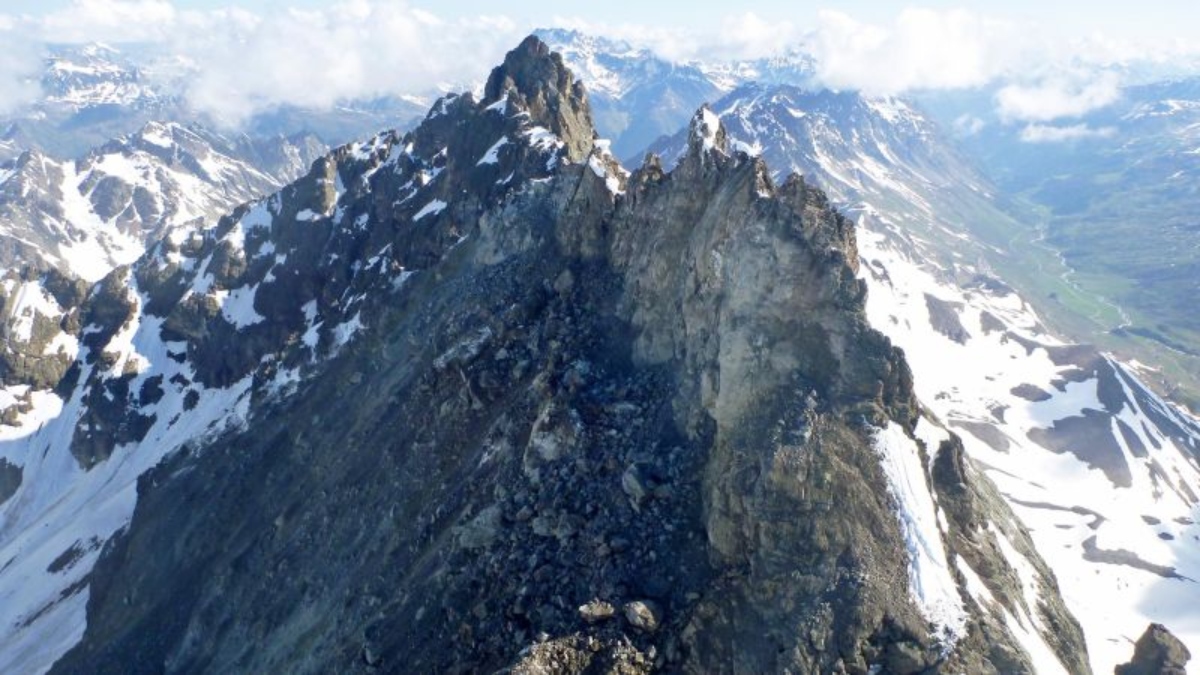(CNN) — A portion of a mountain peak in Austria’s Tirol state has collapsed, releasing more than 100,000 cubic meters of rock and causing landslides.
Rocks began falling from the nearly 3,400-meter Fluchthorn mountain in the Silvretta Alps on the border between Switzerland and Austria on Sunday, in an incident state geologists say was caused by melting permafrost.
Alpine Police said no one was injured in the rock slide.
In a reconnaissance flight over the affected area, state geologists made a preliminary estimate of the amount of rock that fell, but the estimates may be conservative because it will take time to get a more accurate picture.
Austria’s Fluchthorn mountain after a rock slide this Sunday, June 11. (Credit: Bettina Sax/Land Tirol)
“This is a relatively large incident, we’re talking about at least 100,000 cubic meters (about 3.5 million cubic feet) of loose rock, maybe more,” state geologist Thomas Figgle said in a video produced by Tyrolean. State Govt.
Geologists attribute the collapse to the thawing of permafrost, a long frozen layer of soil and rock. Although usually associated with arctic regions, permafrost is also found in the European Alps.
“We can say with relative certainty the cause of this incident: permafrost. The ice is the glue of the mountains, and the ice has been melting for a long time because of climate change. That’s what’s causing the results we’re seeing here.” Figl said. .
According to Marcia Phillips, head of the permafrost research group at the WSL Institute for Snow and Avalanche Research in Switzerland, melting permafrost can cause a destabilization.
“Water can seep deep into rock blocks through newly opened fissures that were previously sealed by permafrost ice,” he told CNN, explaining that this could lead to rock fracturing.
According to Phillips, there isn’t enough data to know if rockfalls have increased in recent years because only large events are typically documented. Scientists rely on information from the public, and many reefs occur in remote areas.
But as human-induced climate change raises global temperatures, permafrost melts, and ice and glaciers melt, rockfalls are becoming more frequent in this region.
“With permafrost temperatures, snow loss and high groundwater content, we expect landslides and rock falls in upper alpine areas where permafrost is found,” says Phillips.
Rockfalls can cause major disruption to those living in the shadow of these mountains.
In May, the residents of Brienz, a Swiss town in the Grisons region near Davos, found themselves. forced to evacuate After being warned that rocks falling from the mountain above their homes could crush them with almost 2 million cubic meters.
The rocks have not yet reached the city, but residents cannot return. Christian Gartmann, a member of the crisis management team for the region that includes Brienz, told CNN that there has been a sharp increase in activity in recent days with several rockfalls. “It’s very dangerous, many rocks are falling,” he said.


:quality(85)/cloudfront-us-east-1.images.arcpublishing.com/infobae/BH6NLAQGXJGADFWTENBUV7Z7RQ.jpg)
:quality(85)/cloudfront-us-east-1.images.arcpublishing.com/infobae/3GK63ATFOMFAYNUAQKUL4WUJFM.jpg)

:quality(85)/cloudfront-us-east-1.images.arcpublishing.com/infobae/SJ35ZLSJ5NB4BWVRJPSK74P7AQ.jpg)